America’s obsession with weight and the “perfect” body is definitely not a new thing. But it used to look a little different.
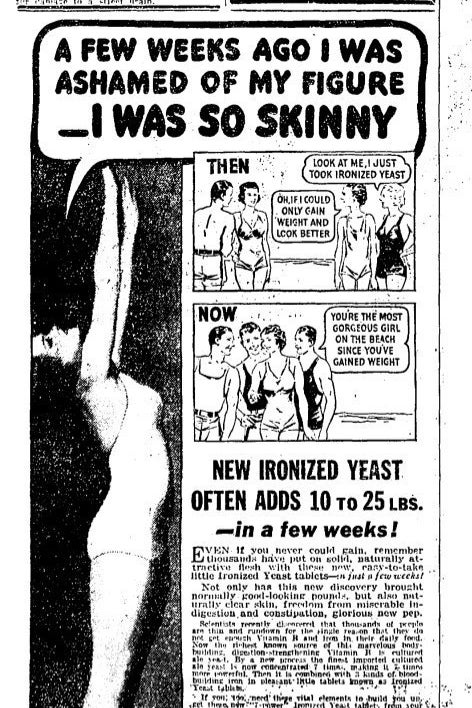

The idea may seem weird in today’s (still) skinny-centric American society, but up until around the 1960s, weight gain diets were a big thing. The slogans say it all: “Skinny girls are not glamour girls,” or “Gain Weight! Stop Being Skinny and Tired!’ Ads promised that dieters could “add 5 lbs. of solid flesh in 1 week” and put on attractive pounds and inches. After all, no man could love a scarecrow!
That doesn’t necessarily mean that beauty ideals were more forgiving then; they were just different. Diet books from that era (which I read hundreds of for my PhD thesis) often had two sections: one for the “too fat” and one for the “too thin.”
But I always found myself thinking that those old gaining diets looked like a lot of fun — tons of cream, candy, meat, and milkshakes. One diet I saw called for “chopped beef with chocolate” and 10 hours of sleep a night. Another called for “buttered beets” and sponge baths.
I decided I would try one for a few days, to see how it felt (and tasted). And I settled on the best one I’ve found yet, in the 1918 book Physical Beauty, How to Keep It, by Annette Kellerman. In my quest to achieve turn-of-the-century perfection, I spent three days following Annette’s weight gain diet and trying out her exercise tips.
Annette was quite a woman.
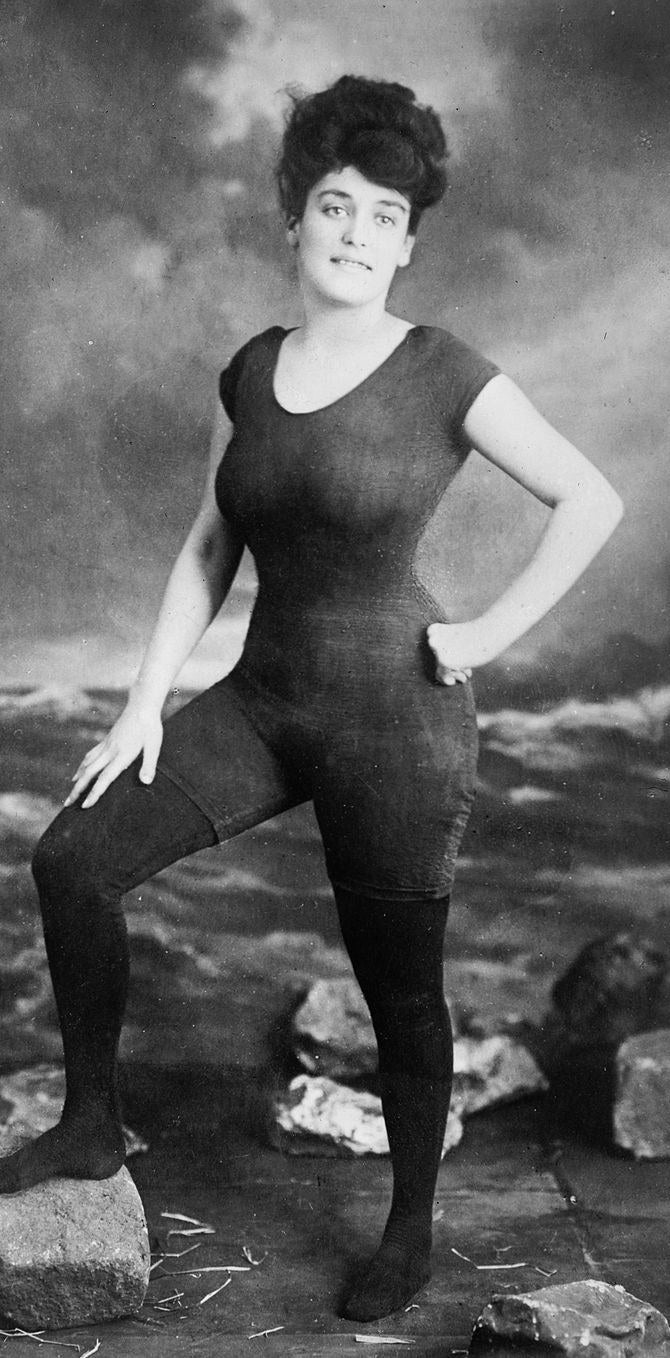
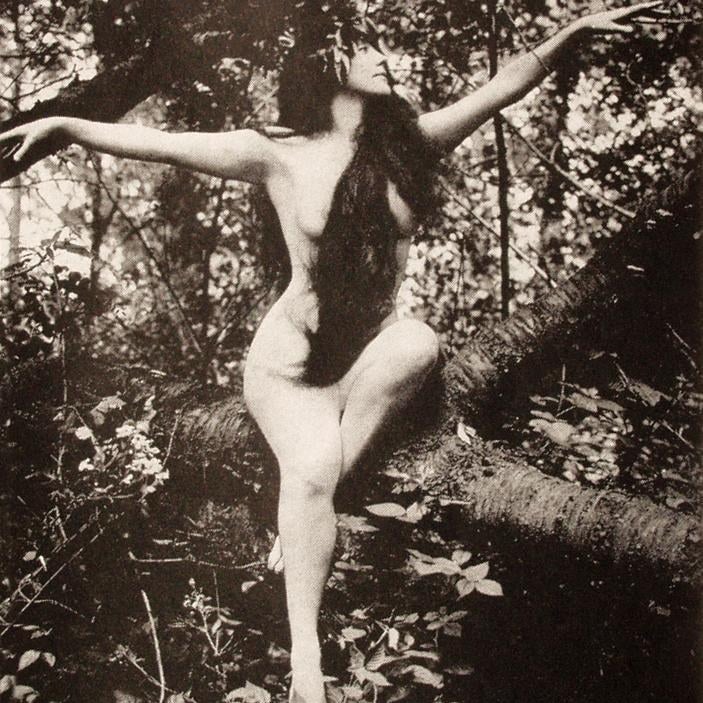
She was a champion swimmer, the inventor of the modern bathing suit, and the first woman to appear nude in a major Hollywood film. She tried to swim the English Channel three times. She did underwater ballet in a giant tank. She was arrested for indecency. This one time in Jamaica, she dove off a waterfall into a pool of crocodiles.
Annette's life certainly set the bar high — a little too high, maybe, for anyone else. In the introduction to her book, she suggests that women who “insist on becoming ugly” are at fault for their husbands divorcing them, and that any woman who isn’t constantly concerned with “making the most of her physical self” is just phoning it in.
Annette was writing at the tail end of World War I, as beauty trends were undergoing a major shift. Her book was published right after the era of the corseted Gibson girl (tall, elegant, with an impossibly tiny waist, big boobs, big hips, and hair piled messily in an Edwardian updo), but a few years before the 1920s flappers, who were flat-chested, boyish, and spunky.
She wasn’t a big fan of either end of the size spectrum. “We have hundreds of young and middle-aged women fat, shapeless, loose, engaged in a continuous struggle with their buttons,” she wrote, “or scrawny umbrellas of women, with every curve a hollow, and every bone trying to make itself felt and seen.”
But, in Annette’s view, weight didn’t matter as much as your overall health and figure. BMI has nothing on her calculations of the ideal "ratio of femininity.”

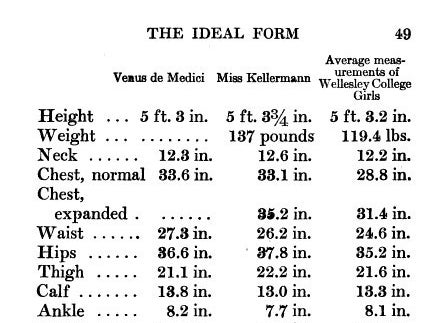
In a world without mass media and celebrities, I guess you end up comparing yourself to ancient Greek statues? Annette called the traditional model of the Venus de Milo “rather fat and loosely built.” Venus de' Medici was slightly better, but Annette herself (who else?) was just right. Annette had a bigger neck, smaller waist, thicker thighs and arms, thinner ankles and wrists.
Even if you were the “right” weight, you could still have a “wrong” size neck, wrists, or waist — and be far from the ideal (i.e. Annette herself). “As for my own measurements, while I do not claim them to be perfect,” she says, “I do claim that they show what may be accomplished by full bodily development.”
The longer I looked at Annette, the more I felt like a scrawny umbrella. She may not have been the kindest diet guru, but her self-confidence was inspiring, and (weirdly) I began admiring her wrists. And she seemed very clear about what I needed to do to attain perfection: “Bodily form, or the perfect figure, is to be won by proper muscular development and proper control of weight by rational diet,” she says in the book. “There is no other way." That seemed reasonable enough?
I decided to run some numbers to see exactly how I was doing compared to Annette’s "Ideal Form."
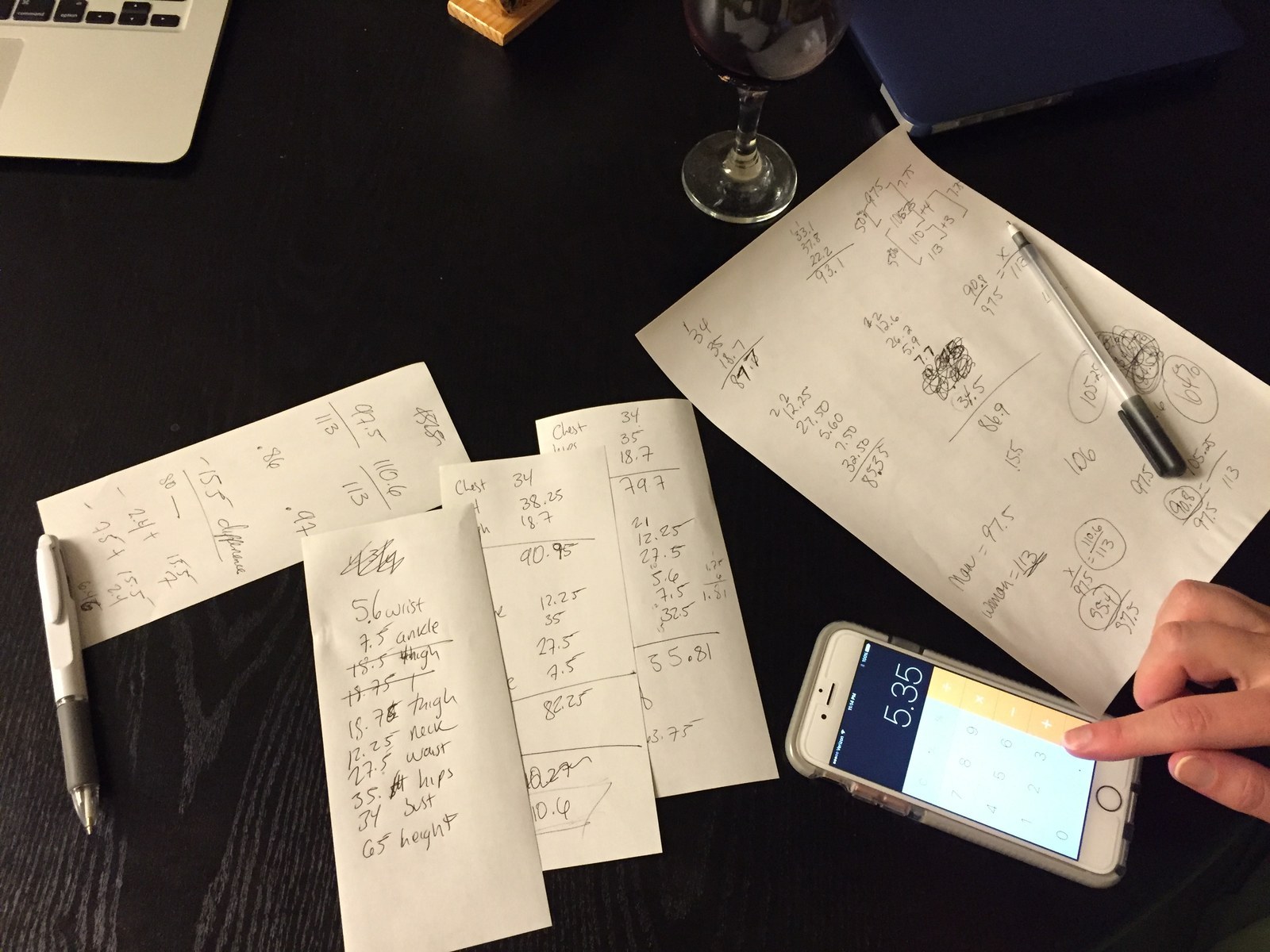
This got a little complicated. To obtain my own ratio of femininity, I had to add together the measurements of my chest, butt, and one thigh. Then I divided this number by the total of my neck, waist, wrist, ankle, and half my height, and finally multiplied by 100.
My number came out to 110 — just 3 valuable points away from Annette! Apparently, I needed to increase my chest, butt, or thigh by about two inches. Or I could decrease my neck, hips, wrist, or ankle by about an inch. Then, according to her, I’d be perfect.
I figured there was only so much I could do about my muscular development in a few days, but I might be able to put a few pounds on my umbrella frame.
A table in the book’s chapter on “Food and the Beautiful Body” told me the ideal weight range for a woman my height was 126–141 pounds. At 125, I was only one pound away from her ideal, which meant it was time to get gaining! I set out some rules for myself to try to replicate the full 1918 diet experience:
• I had to cook everything myself.
• I would try to follow historically accurate recipes.
• I couldn’t eat or drink anything not on the diet (except coffee, of course).
• I would not do any other exercises besides the ones she recommended (no gym, no hikes).
• I’d have a weird, fun time gorging out! Let the lamb chops and milkshakes begin!
† DAY 1 †

To start, I made “bran gems” and fried bananas...
...for a complete breakfast!
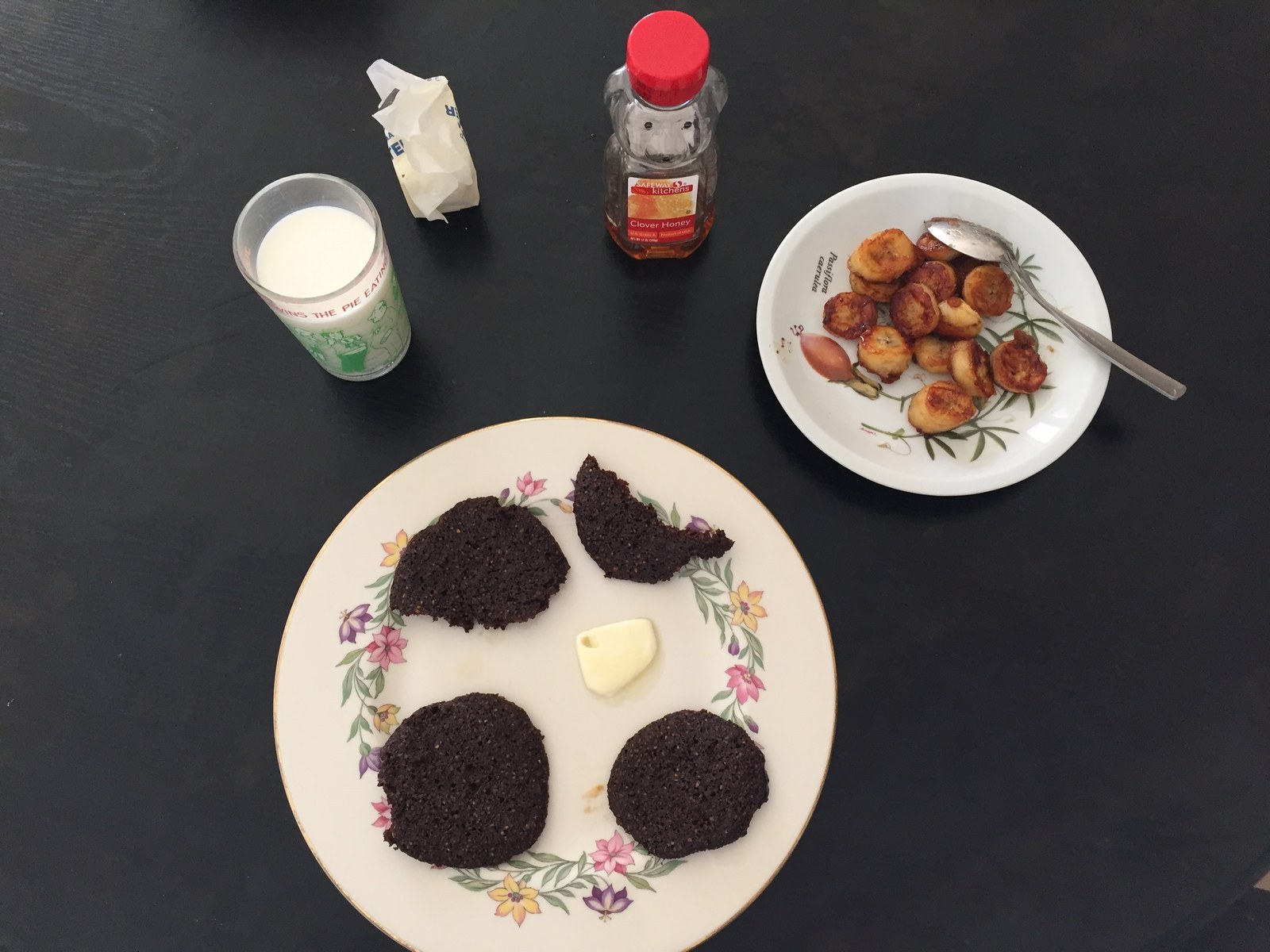
Bran gems have been lost to history, and now I know why. They are disgusting. I followed a 1912 recipe that called for black treacle (molasses), baking soda, and bran. And they tasted exactly like what they were made of: bran and treacle. Not great, and they kind of smelled like a gas station. The bananas were delicious.
A few hours later, I sat down to my first luncheon.
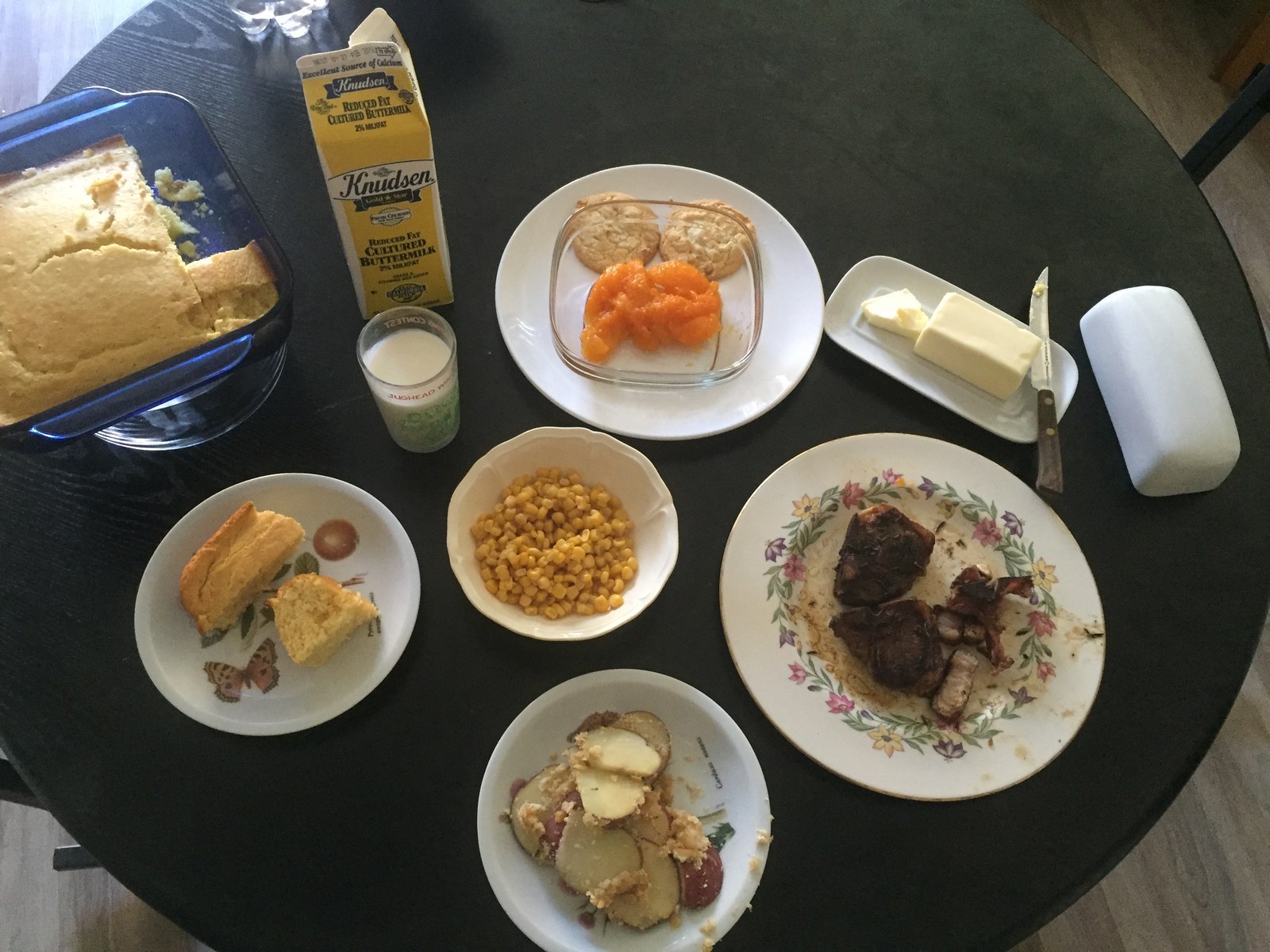
I feasted on lamb chops, scalloped potatoes, cornbread, corn, stewed apricots, cookies, and buttermilk.
Most of us usually eat lamb chops at a restaurant or family dinners or somewhere other people can see you eat lamb chops. But when you eat three lamb chops alone on a Wednesday afternoon, there is no pretense of fork or knife or napkin. It felt great.
Only the buttermilk was hard. It actually tasted OK on its own, but got super gross all swirled around in my stomach with the other soft, creamy, orange things.
After lunch, I was very glad to have indoor plumbing and a dishwasher.
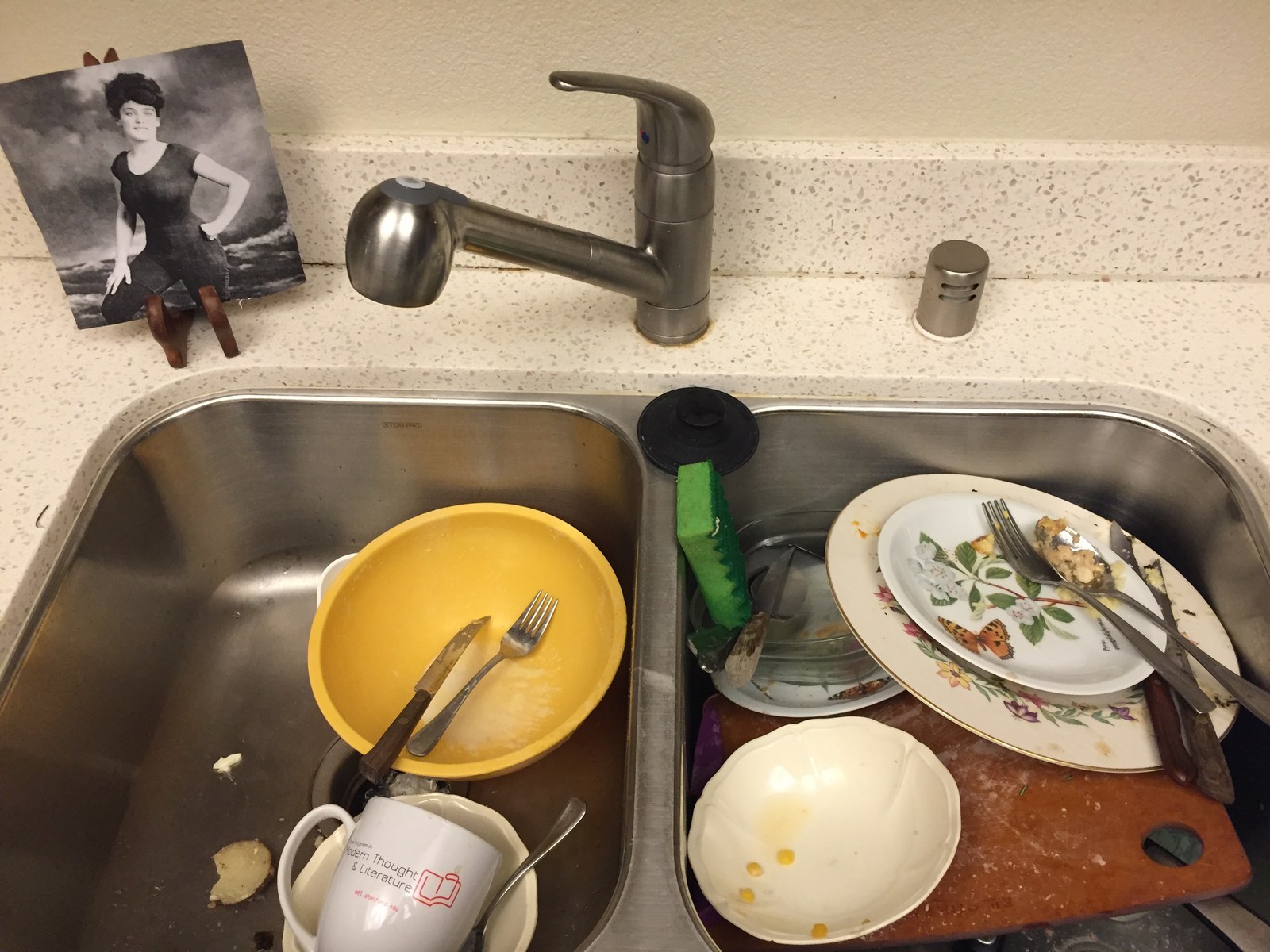
I recruited some friends to help me eat dinner.

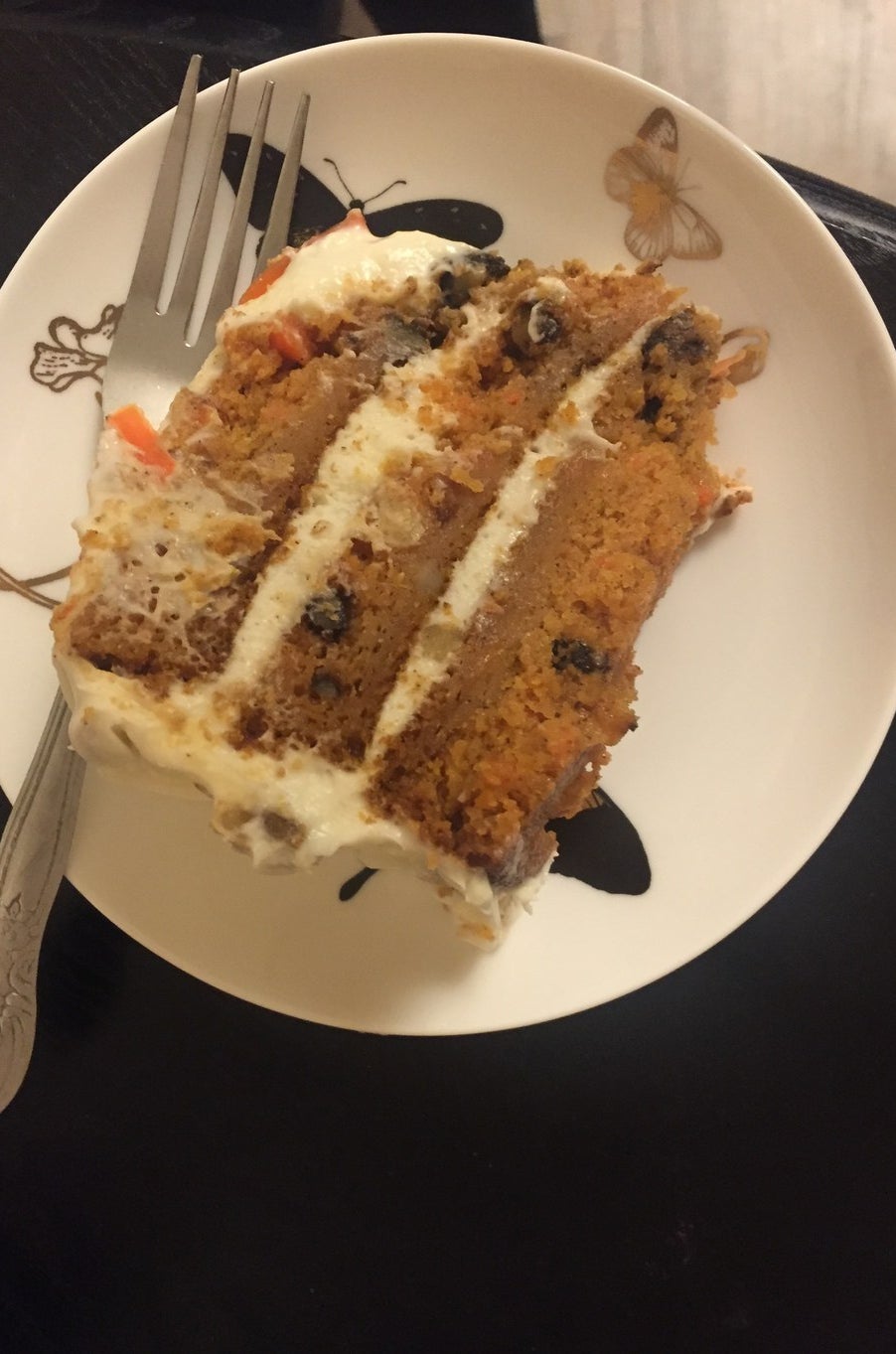
Roast beef is so simple: Rub oil onto meat, heat oven, put the meat into the oven. Easy, tasty, cheap, and everyone seemed to like it well enough. My friend Rebecca also tried bran gems for an appetizer. My friend Ateeq discovered sardines. We all enjoyed the cake. It was a hit!
Still, I felt myself slipping already. I broke my own rule about cooking everything myself. I bought the split pea soup and substituted the luncheon scalloped potatoes for the required mashed potatoes. I figured carrot cake qualified as “fruit cake,” more or less. But I also figured a few slip-ups were OK, because I did make the cake from scratch and eat half a can of sardines.
After dinner, it was time for my bust exercises.
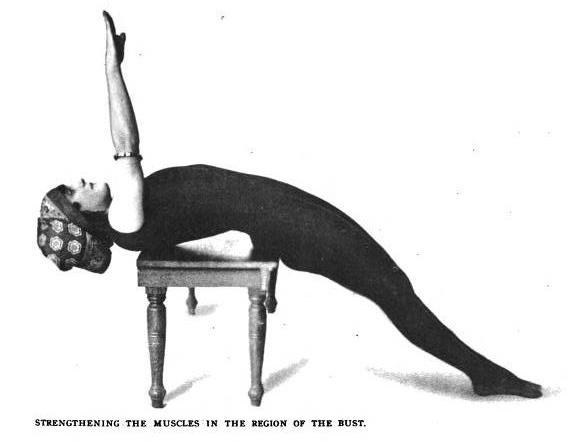
"For the underdeveloped person," Annette says, "exercise increases the muscular growth and fills out the deficient tissues." So I did 20 of these exercises to strengthen the bust region (bring my arms down and then up again).
Was my form getting more ideal? Hard to tell, but I definitely went to bed feeling accomplished.
† DAY 2 †

Honestly, I gave up on breakfast and went straight to lunch.
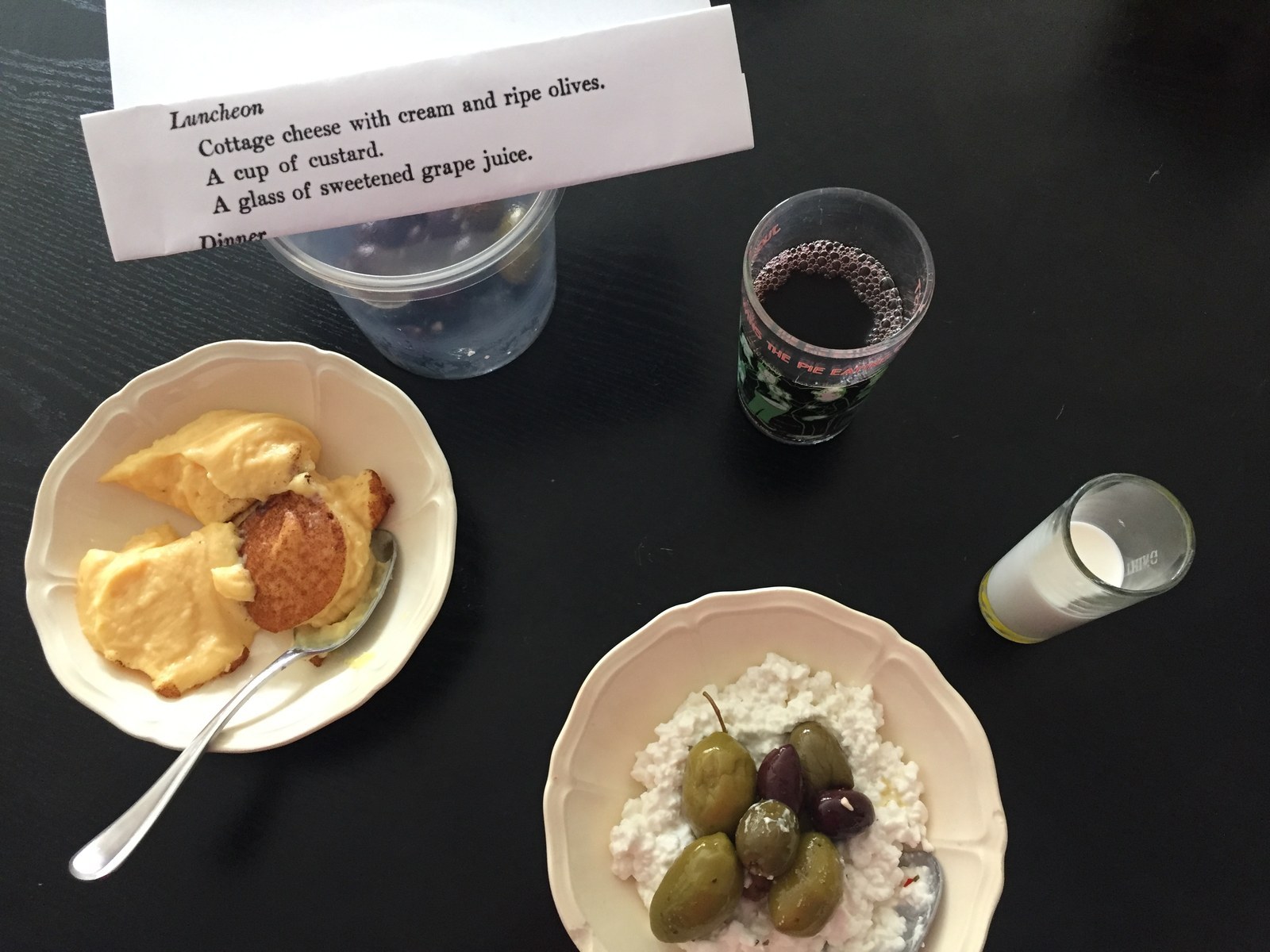
I had planned to wake up at 6 a.m. to make hominy with syrup, bacon, eggs, and cocoa. But I did not, because I was tired and the dishwasher was full and the last thing I wanted to do was eat hominy, syrup, bacon, eggs, and cocoa.
So I also didn’t pack lunch and had to ditch a work-lunch date to go home to eat. I was discouraged after skipping breakfast, and my lunch menu didn’t help. I nestled olives (the fancy kind!) into cottage cheese and then drizzled with cream.
It was a Thursday afternoon and I was missing work to be home alone, sitting at the kitchen table, coaxing myself to eat custard. And in between the stewed fruit, custards, milk, cream, buttermilk, soft potatoes, hot bananas, and pureed peas...I was really beginning to miss chewing.
For dinner, I only cheated a little.
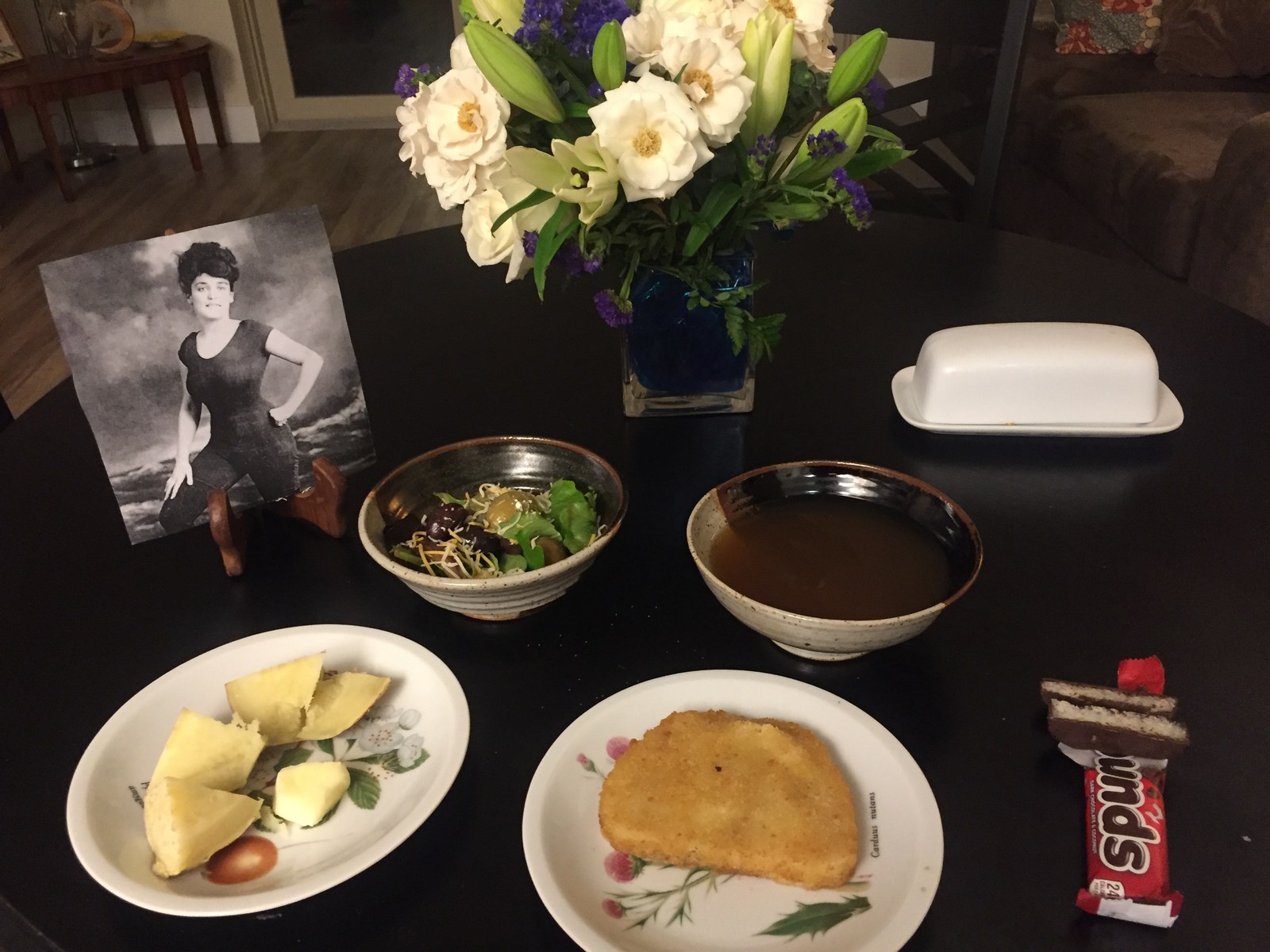
I set the mood with flowers and an inspirational photo of Annette to keep me company. I will confess that some of this meal — barley beef broth, salad with olives and cheese, fish, sweet potatoes, and coconut pie — made use of a very handy mid-20th century invention: the microwave. But I did cook everything!
That orangey loaf thing is fish. The broth was hot and the sweet potato (OK, fine, it was a normal potato) was baked. The only real crime was calling the Mounds bar “coconut pie.”
Not too bad. Still nothing that required much chewing, but I was about to get plenty of that with my after-dinner exercises.
After dinner, I attempted the following neck exercise:
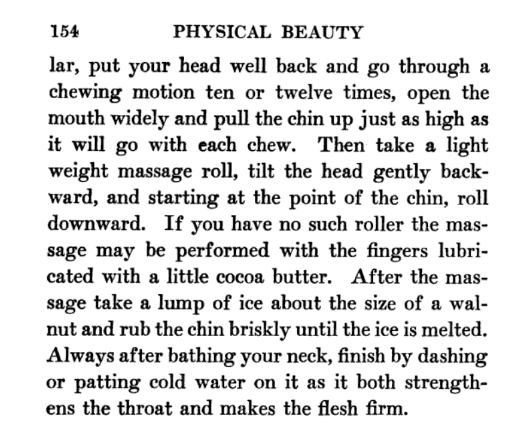
I settled for a regular ice cube, but it still took about five minutes for the thing to melt all the way. Basically, I was chewing air while looking up at the ceiling. I reminded myself of that urban legend about turkeys who drown by staring up at the falling rain.
† DAY 3 †
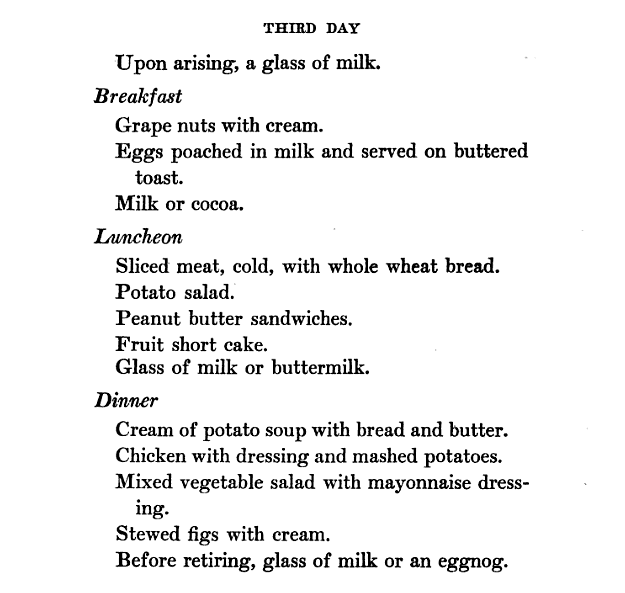
I started the third day off right, with eggs poached in milk.
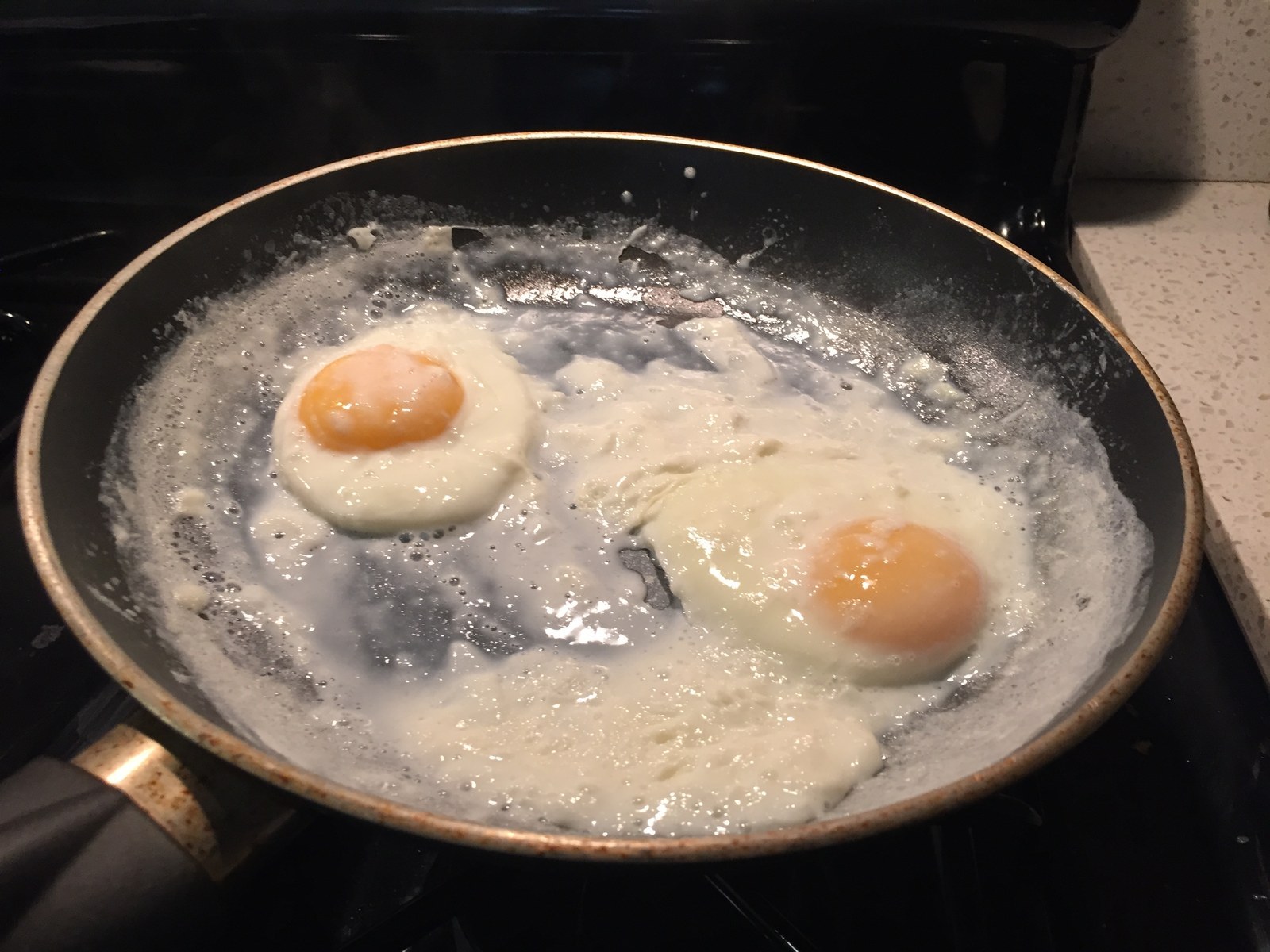
It was easy enough to do — simmer milk, slide in eggs, baste hot milk over yolk, gently remove. But it was hard to tell the difference between boiled milk chunks and egg white, and that was gross. No one wants to take a bite of egg and discover it’s actually a chunk of boiled milk skin.
But breakfast went downhill quickly from there.
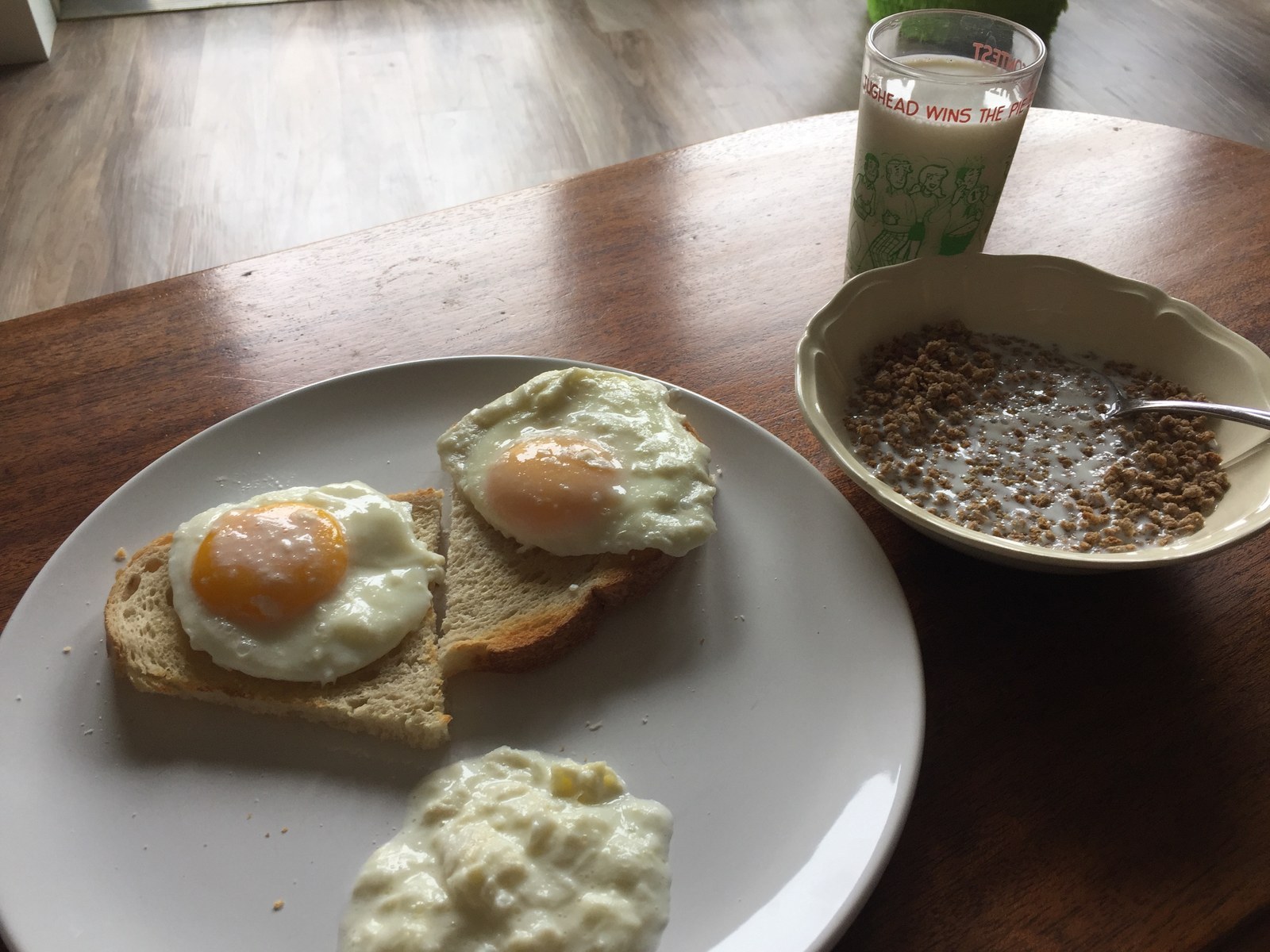
I hoped I would feel sentimental about the Grape Nuts. I remembered hating them when my grandma served them for breakfast, but maybe by now I had grown up enough to appreciate her healthy eating habits.
I was wrong. I did not feel nostalgic about the Grape Nuts. I felt disgusted by Grape Nuts. Even microwaving the whole cream/Grape Nuts situation didn’t help. Then it just tasted like hot wheat barf pebbles.
Luckily, luncheon that day was actually good.
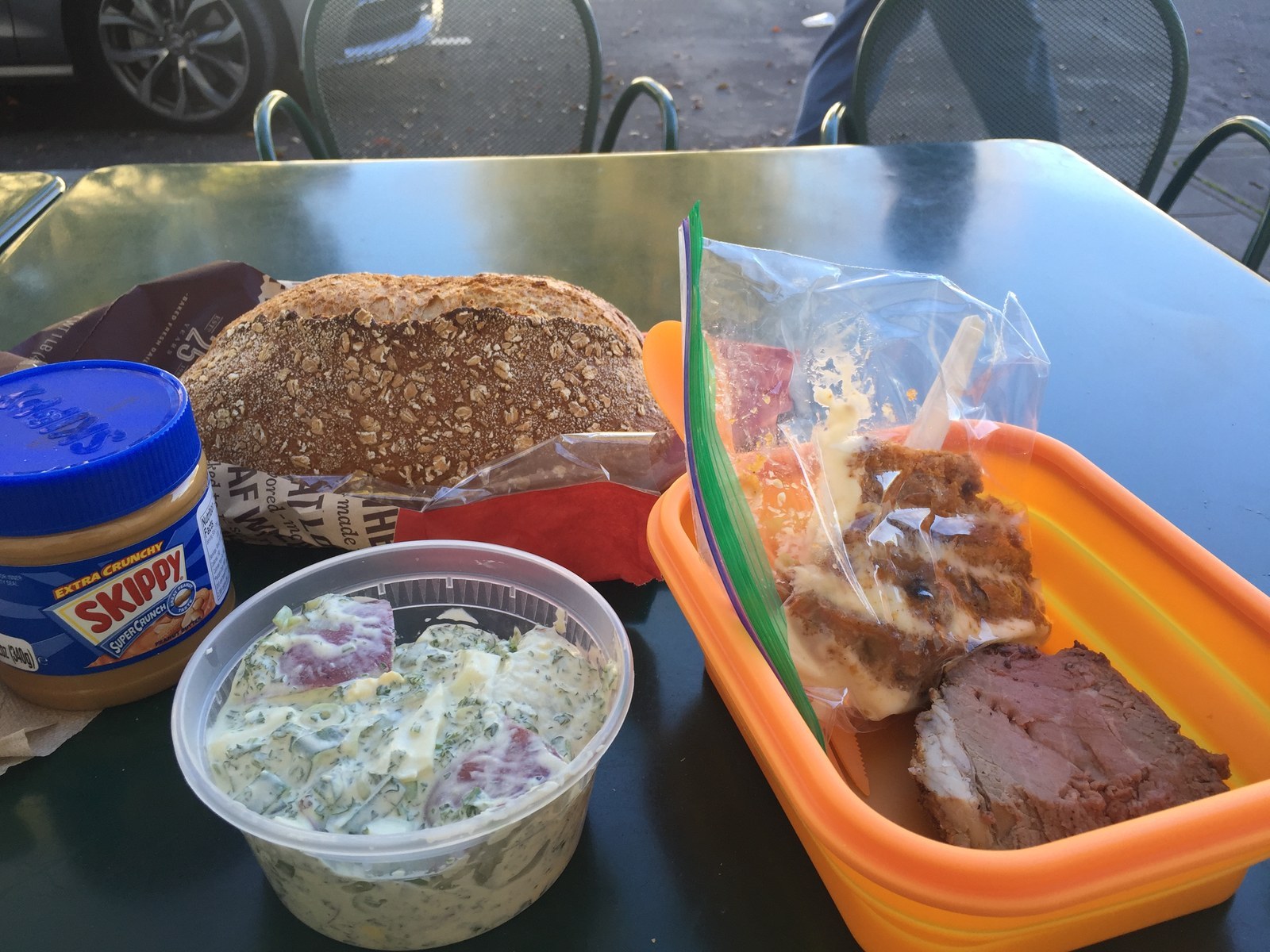
I ate leftover roast beef, potato salad, peanut butter sandwiches, and cake. The cake got smooshed, so I ate it kind of like a Go-Gurt out of the plastic bag.
And dinner was satisfactory.

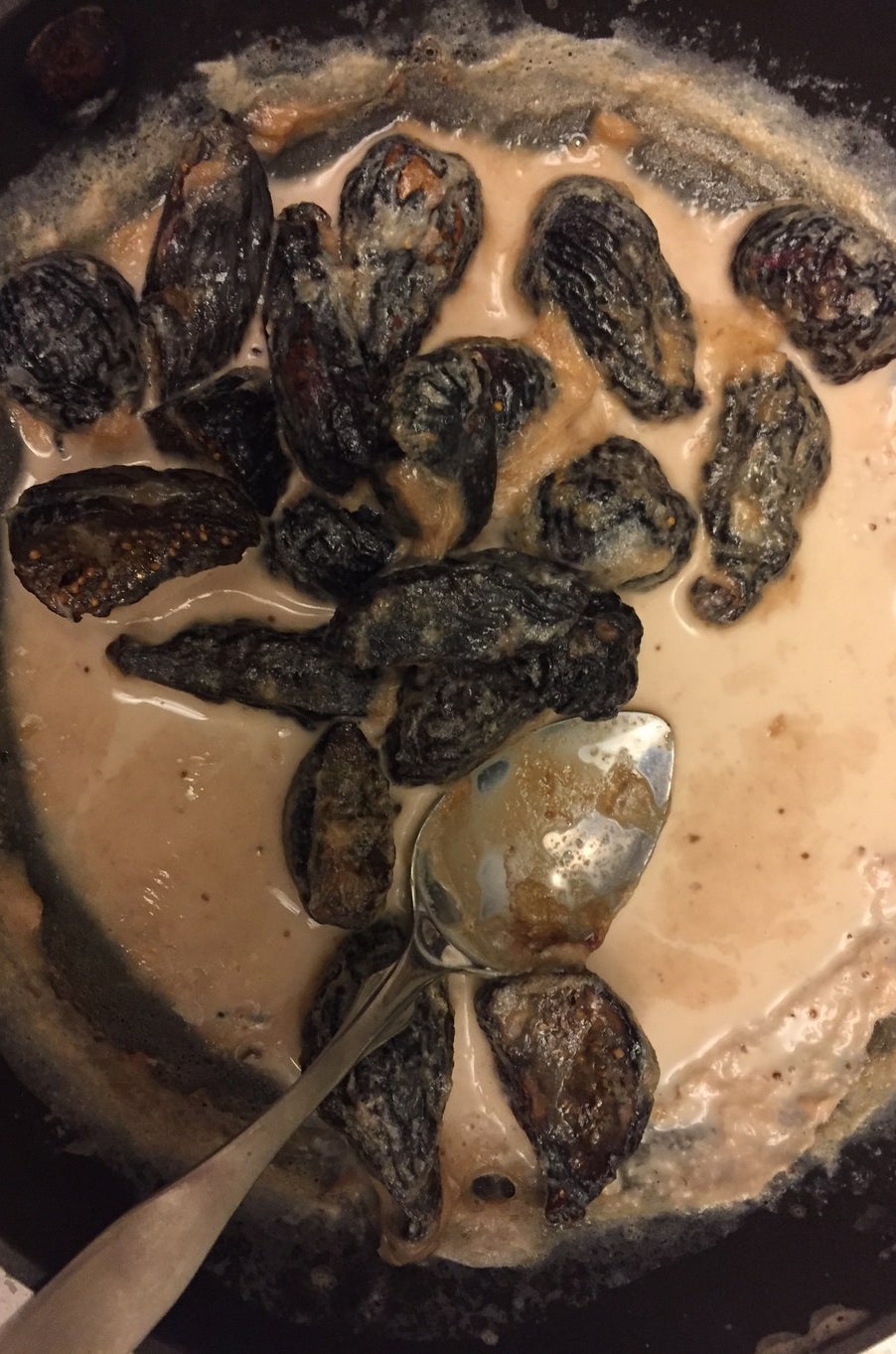
It was basic: meat, potatoes, vegetables, soup. The chicken may or may not have been prepared in my kitchen...but it was eaten on my kitchen table, so that counts, maybe. This whole day was pretty easy.
The stewed figs for dessert looked gross and tasted great. The cream and gelatin in the recipe I used (from the turn-of-the-century Boston Cooking-School Cookbook) plumped up the figs nicely. I felt more fat than I did sick, so I did pretty well!
After dinner, it was time to work on achieving beautiful hands.
Annette calls the hand the most appealing of feminine charms — the “union of beauty with efficiency” that “made the art and machinery of our civilization.” But hands can also be "ruinous" (if you have stubby nails) or in bad taste (if your nails are too long). She explains that red, chapped hands “offend the beholder and overwhelm the owner with self-consciousness and mortification.” I had never considered my hands closely enough to feel self-conscious. But I do now.
Annette dedicates six pages to hand care, in which she recommends daily hand exercises, nightly massage, and hourlong manicures weekly. I can’t imagine anyone bored or rich enough to spend seven hours a week on their hands. But I did it for a night, and it was actually a lot of fun.
First, I exercised by pressing my pinkie against my thumb. Then I extended my thumb past my pinkie. I did this 20 times for each hand. Second, I rotated each finger. This exercise is “invaluable in making the fingers supple.” Third, I massaged the backs of my wrists. Annette recommends using the thumb in a firm circling motion to break down lumps of fat. Fourth, I held up my hands and stroked each vein back toward my arm. Fifth, I attempted a manicure. It required buffing, filing, soaking, rubbing, polishing, and loosening dead skin. It didn’t turn out great.
True, I wasted an hour exercising my thumbs and rubbing possibly nonexistent fat lumps. But I also felt good — like I noticed and appreciated a part of myself that I always took for granted. Even if it was only for that one night, I feel like my hands deserved all that attention.
† THE END †
Now, after my three days of “dieting,” the moment of truth had arrived: I weighed myself at the doctor’s office.
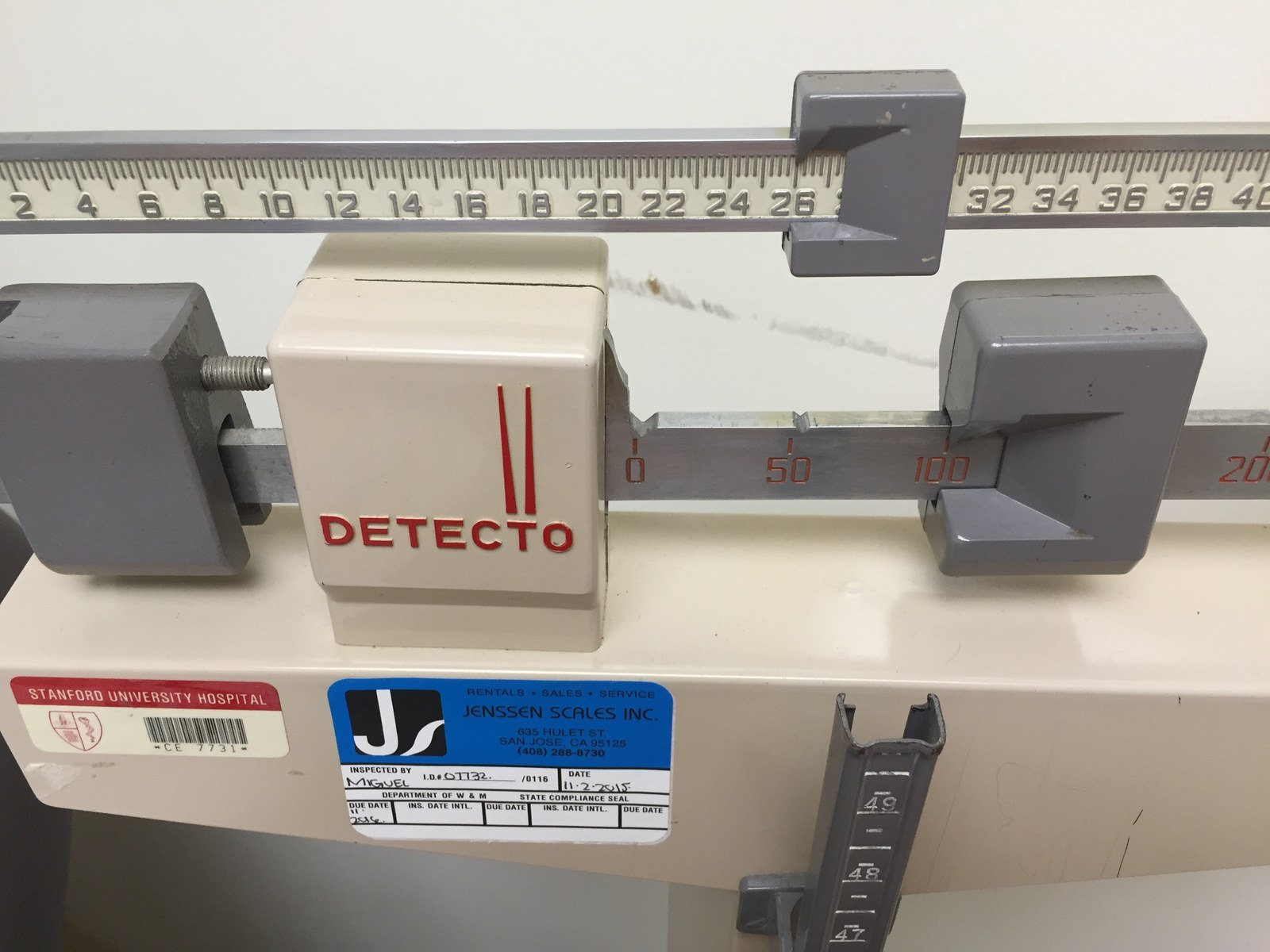
Detecto can’t lie. I was 126!!
Detecto can’t lie, but I definitely can. I think that pound was just normal fluctuation, but I hid my doubts and celebrated my achievement! Because that was the point of the whole thing, really, as far as I could tell: to feel like you’re doing something good for yourself. I made lamb chops and filed my nails. I rubbed ice on my neck. I learned how to use the gas grill. Maybe it’s meaningless, but I felt accomplished.
Of course physical "perfection" through dieting (or anything else) has always been a pipe dream. And it’s impractical as well as impossible: Even with an army of cooks, there’s no way that someone could cook, eat, and clean up after three meals a day and still have time to exercise, massage, and manicure themselves for hours. Especially in 1918, when only 1% of American households had electricity and indoor plumbing.
But even though I didn’t get any closer to looking like Annette, I came to appreciate something else about her: Annette says, in her book, that all women have a “right to be beautiful” — to be sexual and graceful and “rejoice in a glorious buoyant life!” And Annette thought that she herself wasn’t just fit or acceptable or healthy — she felt perfect. In her own eyes, she was more beautiful than Aphrodite.
And if Annette could be perfect, why couldn’t I, in my own way? What’s stopping me from writing my own diet book, or calling my own body “ideal,” skinny wrists and all? What’s stopping me from making my own rules?
Well, here they are: lots of cold cereal (Honey Bunches of Oats with whole milk, preferably), scrambled eggs, sourdough toast, avocado sushi, hot sauce, and spring rolls. Only eat Fuji apples with truffle cheese. Slurpees are really good mixers. Noodles are a waste of time when toast is an option. Gin is gross. Broccoli is good. Corn nuts are surprisingly healthy. Forget your water bottle nearly every time you work out. Loud 80s pop sounds best on the treadmill. Snickers are the best energy bars for long hikes. Upper chest exercises cure laptop hunchback.
If you follow these guidelines, I promise you will look (or at least feel) a little bit more like me. But honestly, I’d rather you did your own thing.

